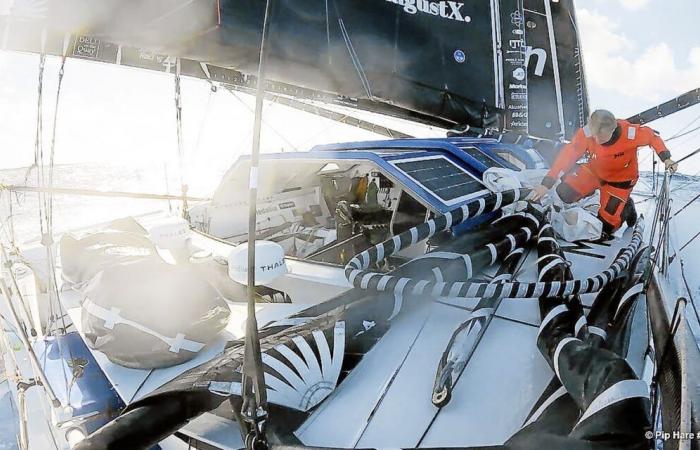The question is not taboo but it is disturbing. “Do you strap yourself in the safety harness all the time? “. This question was asked of several Vendée Globe competitors before the start. Very often, we got the same answer: “No, not always, but you shouldn’t say it.” Some even added this: “If my wife, my children and my parents read this, I will get yelled at…”
In good weather…
To tie up or not when sailing alone, offshore, in sometimes hostile seas? The answer seems obvious and yet… “Tied up, I don’t feel free to move,” admits Benjamin Ferré. “Being tied up is sometimes a risk when you have to act quickly,” says the skipper of “Monnoyeur – Duo for a job” who plays the safety card when it comes to going on deck. “I attach myself when I have to spend time on deck tinkering or attempting a somewhat daring maneuver.”
You just have to look at the images, photos and videos sent by Vendée Globe competitors since the start to realize that most of the time, they do not wear safety harnesses.
One hand for yourself, one hand for the boat
Normal when they are inside or in closed and very well protected cockpits. More surprising when they move on the bridge. Where we see them, cell phone in hand, filming most often when the weather conditions permit. That is to say when the sea is calm, the wind has gone down to the bottom of the Beaufort scale. When the sun is out. We can easily understand that they want and need to get some fresh air, especially to stretch their legs. Moments when vigilance drops a notch. However, it only takes a small movement of the boat following a wave or simply an autopilot stalling to be unbalanced.
“The best rule is common sense”
Double winner of the Vendée Globe, Michel Desjoyeaux does not apply the golden rule: “I do not agree with those who say that we must hold on all the time, nor do I agree with those who say not to get attached: the best rule is common sense.”
Common sense, according to him, is to calm things down, therefore to slow down the boat when a maneuver is necessary on the deck, especially at the front. Especially when things get rough. To hold on when you need both hands. “At high speed, if you get caught in a wave of seas, if it’s not the safety harness that breaks, it will be your ribcage that will break,” adds the Professor who curses after these pre-race images where we see, for the needs of sponsors, the loners “acting stupid in the front balcony of the boat, like Leonardo di Caprio in Titanic, just to have a spectacular photo which does not reflect the real one at all life at sea. It's said.
Offshore, the rule “one hand for yourself, one hand for the boat” is therefore not always applicable on monohulls capable of traveling at more than 30 knots. To fly high and fall from just as high. At these speeds, the hand will not be enough to keep the sailor on board.
“Your boat drifts faster than you swim”
On the Imoca, 18.28 m long, each single-handed boat can wear a safety harness equipped with a standardized lanyard which they attach to a lifeline placed along the entire length of the deck. The goal is, in the event of a fall, to remain on board the boat. So inside the sectors.
In solo mode, sailors almost never steer, they are 99% of the time on autopilot. Almost all of them wear the pilot's control on their wrist or around their neck, on which they can act. In the event of a fall overboard, the system normally allows the boat to be stopped and turned into the wind. “In theory yes, you can stop your boat but if you fall in the water, you have almost no chance of getting back on: your boat is drifting faster than you are swimming,” concludes Desjoyeaux.






